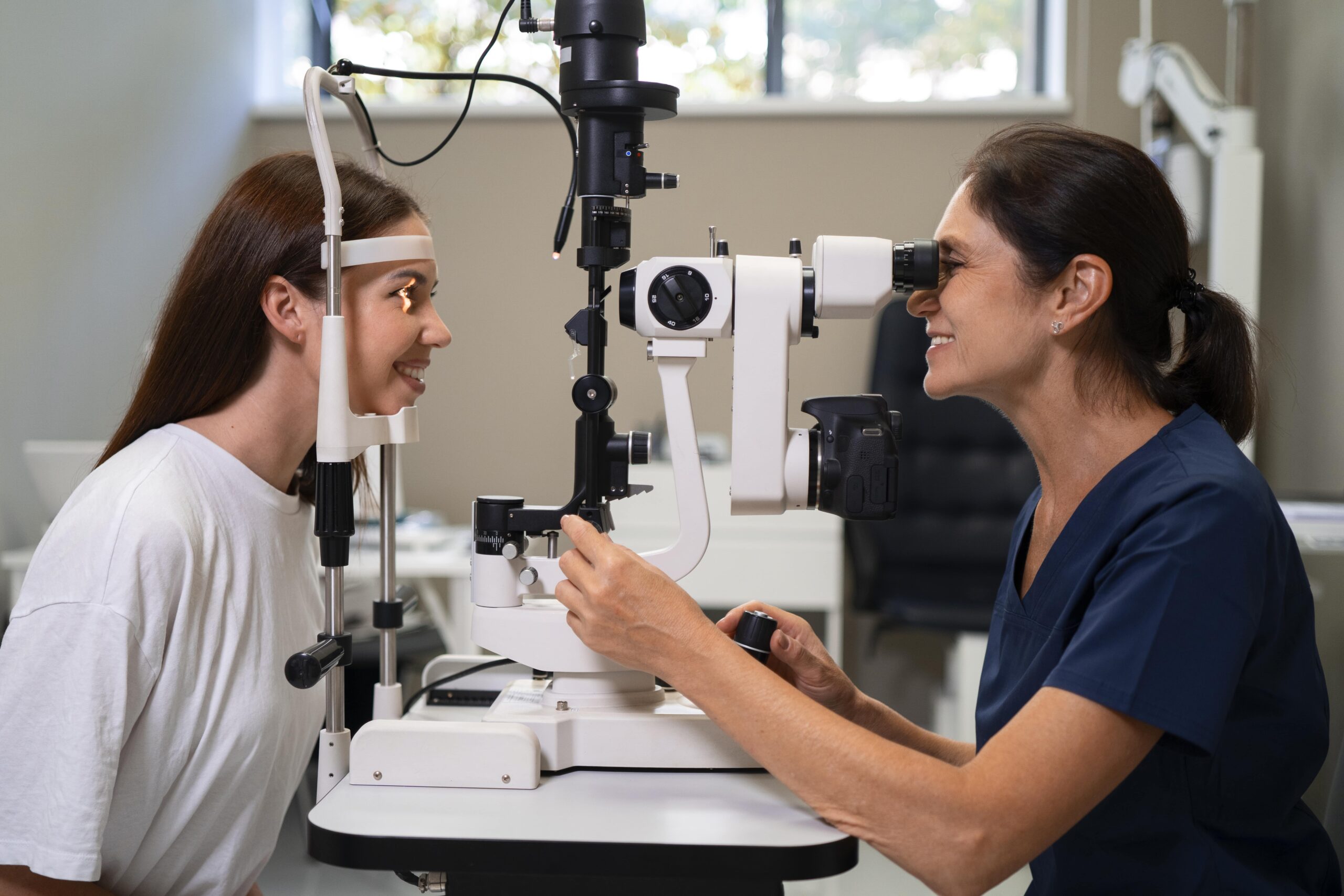Beyond Visual Acuity: Understanding Comprehensive Eye Health
Many individuals mistakenly believe that perfect 20/20 vision eliminates the need for regular eye examinations. This common misconception overlooks the comprehensive nature of ocular health assessment. Visual acuity the measure of how clearly one sees at various distances represents merely one aspect of eye health. Professional examinations evaluate numerous additional components including intraocular pressure, peripheral vision, color perception, depth perception, eye muscle coordination, and the structural integrity of all ocular tissues.
Furthermore, the eyes function as windows to overall health, often revealing early signs of systemic conditions before other symptoms manifest. During comprehensive examinations, eye care professionals can detect indicators of diabetes, hypertension, autoimmune disorders, certain cancers, and neurological conditions through careful assessment of ocular structures. These potential findings underscore the importance of regular evaluations regardless of visual clarity. The preventive benefits extend far beyond vision correction, potentially identifying life threatening conditions at stages where intervention proves most effective.
The Silent Nature of Eye Diseases: Detecting Problems Before Symptoms Appear
Numerous sight-threatening eye conditions develop and progress without causing noticeable symptoms until significant damage has occurred. Glaucoma, often called the “silent thief of sight,” damages the optic nerve gradually without pain or early vision changes. By the time visual field defects become apparent, permanent damage has typically occurred. Regular eye examinations that include tonometry (pressure measurement) and optic nerve assessment can detect glaucoma in its earliest stages when treatment effectively prevents vision loss.
Similarly, diabetic retinopathy, macular degeneration, and retinal detachments often begin in peripheral areas of the retina, affecting central vision only in advanced stages. Through dilated eye examinations, professionals can identify these conditions when intervention offers the greatest benefit. Early detection significantly improves treatment outcomes and prognosis for preserving vision. The specialized equipment available at any comprehensive eye hospital in Kannur enables detection of these conditions at their earliest stages, long before patients would notice visual changes, underscoring the preventive value of regular assessments even for those with seemingly perfect vision.
Navigating Digital Era Challenges: How Modern Lifestyles Impact Visual Health
The proliferation of digital devices has fundamentally altered visual demands, introducing unprecedented challenges to ocular health. Extended screen time reduces blink frequency by up to 60%, significantly increasing tear evaporation and contributing to digital eye strain syndrome. This syndrome affects an estimated 65% of digital device users, manifesting through symptoms including eye fatigue, fluctuating vision, dryness, and headaches even among individuals with excellent visual acuity.
Furthermore, prolonged exposure to blue light emitted from digital screens may accelerate certain retinal changes over time. While research continues regarding the long term implications of this exposure, preliminary evidence suggests potential cumulative effects. Regular comprehensive examinations enable assessment of how these modern visual demands affect individual ocular health. Eye care professionals can provide personalized recommendations regarding screen usage patterns, appropriate eyewear options including blue light filtering lenses, and environmental modifications to minimize digital strain. These preventive strategies prove particularly valuable in our increasingly screen dominated environment, where visual demands continue intensifying regardless of baseline visual acuity.
Beyond Adults: The Critical Importance of Pediatric Eye Examinations
Children rarely complain about vision problems, often lacking the comparative experience to recognize visual abnormalities. Many vision issues, including refractive errors, amblyopia (lazy eye), and strabismus (eye misalignment), develop during childhood when visual pathways are establishing critical neural connections. Without timely detection and intervention, these conditions can cause permanent visual impairment that persists throughout adulthood. The American Optometric Association estimates that one in four school age children has an undiagnosed vision problem that affects learning.
Moreover, the correlation between visual function and academic performance has been well-documented through numerous studies. Children with uncorrected vision problems frequently struggle with reading comprehension, attention span, and overall academic achievement. These challenges often manifest as behavioral issues rather than obvious vision complaints, potentially leading to misdiagnosis of learning or attention disorders. Comprehensive pediatric eye examinations can differentiate between true learning disabilities and vision-related learning obstacles. The eyecare services in Kannur include specialized pediatric assessments that employ age-appropriate testing methods, creating comfortable environments for accurate evaluation of young patients who may not yet recognize or articulate visual difficulties.
Aging Eyes: Why Examination Frequency Should Increase with Age
The aging process inevitably affects ocular structures and functions, increasing risk for numerous conditions even among individuals who have maintained excellent vision throughout their lives. After age 40, presbyopia the gradual loss of the eye’s ability to focus on nearby objects becomes nearly universal, affecting reading and close-work capabilities. Cataracts begin developing in most adults during their sixties, though they may progress slowly enough to remain asymptomatic for years before requiring intervention.
Additionally, age-related macular degeneration risk increases significantly after age 50, particularly among individuals with family history or certain lifestyle factors including smoking. Dry eye syndrome prevalence similarly rises with age due to decreasing tear production and changing tear composition. Through regular examinations, these age-related changes can be monitored and addressed appropriately before significantly impacting quality of life. Examination frequency recommendations typically increase with age, reflecting these changing risk profiles. The comprehensive eyecare hospital in Kannur provides specialized geriatric ophthalmology services tailored to address the unique needs of aging patients, employing technologies specifically designed to detect and monitor age-related conditions.
Professional Assessment vs. Self-Evaluation: Why Vision Screenings Are Not Substitutes
Vision screenings conducted in schools, workplaces, or health fairs serve valuable purposes but provide merely cursory assessments focused primarily on visual acuity. These limited evaluations typically check only central vision clarity at specific distances, potentially missing numerous conditions that comprehensive examinations would detect. Studies indicate that vision screenings miss approximately 50% of vision problems in school-aged children and an even higher percentage of problems in adults due to their limited scope.
Furthermore, many individuals unknowingly compensate for developing vision problems through adaptive behaviors, potentially passing basic screenings despite underlying issues. These compensatory strategies often involve subtle head positioning changes, increased squinting, or unconscious avoidance of certain visual tasks. Professional examinations employ multiple testing methodologies that minimize these compensatory effects, enabling more accurate assessment. Additionally, comprehensive examinations evaluate aspects entirely omitted from screenings, including depth perception, color vision, eye alignment, focusing ability, peripheral vision, and detailed assessment of ocular structures. These evaluations require specialized equipment and professional interpretation not available through screening programs, highlighting the irreplaceable value of complete professional assessment regardless of screening results.
Establishing Your Eye Examination Schedule: Guidelines for Lifelong Visual Health
Appropriate examination frequency varies based on age, risk factors, existing conditions, and professional recommendations. The American Optometric Association suggests that adults with no symptoms or risk factors should undergo comprehensive examinations every two years until age 60, when annual examinations become advisable. However, individuals with diabetes, hypertension, family history of ocular conditions, previous eye injuries, or occupations with high visual demands benefit from more frequent evaluations regardless of visual acuity status.
Additionally, certain medications necessitate more frequent monitoring due to potential ocular side effects. These medications include corticosteroids, hydroxychloroquine, tamoxifen, and various psychiatric and anticonvulsant medications that may affect ocular structures or functions. Contact lens wearers typically require annual assessments to ensure continued appropriate fit and to monitor corneal health, even when prescriptions remain stable. By adhering to these guidelines and consulting with eye care professionals regarding personalized examination schedules, individuals establish proactive approaches to preserving lifelong visual health rather than merely responding to problems after they develop and cause noticeable symptoms.
Conclusion: Investing in Preventive Vision Care
Regular comprehensive eye examinations represent prudent investments in both ocular and general health, extending far beyond visual acuity assessment. These evaluations enable early detection of sight-threatening conditions when intervention proves most effective, potentially preserving vision that might otherwise be permanently lost. Furthermore, the potential to identify indicators of systemic health conditions adds significant value to these routine assessments.
Consider scheduling your comprehensive examination today, even if you currently enjoy seemingly perfect vision. Remember that many ocular conditions develop without early warning signs, making professional assessment the only reliable method for timely detection. As with most aspects of healthcare, prevention through regular monitoring consistently proves more effective than intervention after problems become advanced. Your future self will undoubtedly appreciate this foresight in protecting one of your most precious senses through regular professional evaluation.












